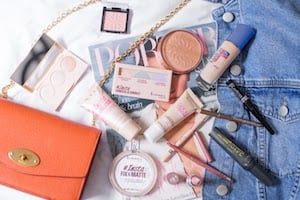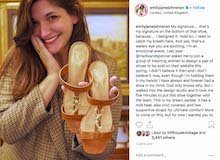Date published: 25.06.2019
The evolution of influencer marketing: an opportunity for FMCG brands
Influencer marketing has developed significantly in the last few years earning a seat as a marketing tactic. According to eMarketer, 93% of digital marketers are dedicating part of their budget to influencer marketing. 48% of marketers worldwide say they use influencers and 55% plan to increase influencer budgets in 2019. Influencer marketing can be a very effective strategy for FMCG brands, allowing them to reach consumers and promote their products. Why should brands engage in influencer marketing? How can it be used to drive sales?
An effective strategy
Golin’s latest UK Consumer Attitudes Report shows that 1 in 4 British consumers (25%) have purchased a product as a direct result of a recommendation from an influencer. Nearly 1 in 3 (31%) are open to sponsored content. And 1 in 5 (20%) are actively keen for product recommendations from influencers, as long as it aligns with their interests and values.
Influencer marketing should be a strategic priority for FMCG brands because:
- Millennials, who are now the largest consumer group, prefer peer voices
- Consumers are actively looking for ideas and inspiration
- Influencers are setting trends that drive spending
- There is a growing desire for creative content from brands.
As such, influencers can have a strong impact on purchasing pathways and decisions as well as on user experiences. According to a Linqia study, 92% of marketers who have used influencer marketing have found it effective.
The rise of micro influencers
Influencers are a trusted voice when they appear as authentic. According to the Golin research, for British consumers, what makes a successful influencer is being genuine, having real expertise and being relatable to their lives. British consumers are 30% more likely to engage with what they perceive as real-life influencers and the popularity of smaller micro influencers continues to grow.
British consumers believe that the kinds of influencers that are the most relevant to their personal life are: honest / real life influencers, lifestyle influencers, fashion & style influencers, beauty influencers and useful / practical content influencers.
A study from Hello Society shows that micro influencers have a 60% higher engagement rate, on average, than influencers with over 100,000 followers. Once an influencer surpasses 100,000 followers, their engagement tends to drop significantly.
Micro influencers partner with brands more frequently than “celebrity influencers” and their readers are accustomed to seeing brand endorsements and seek out product recommendations like they would from a friend. Micro influencers also cost a fraction of the price of a “celebrity influencer” — allowing brands to put more money towards paid amplification and audience targeting vs content creation.
Research from Experticity reveals that 82% of consumers follow the recommendations of a least one micro or nano influencer on social media.
The Financial Times published an article on the topic in January titled “Meet the micro influencers”.

Content first
If influencer marketing is as effective, it is because consumers want quality content. In a study carried out by MDGadvertising, 70% of people say they would rather learn about products through content rather than traditional advertising.
In the UK, 33 million people use Facebook, that is over 49% of the population. The average time spent per day on social in the UK is over 1 hour. One of the motivations is to find ideas and inspiration. For example, 43% of Millennial Pinners end up spending more than other Millennials because Pinterest helps them easily find ways to use new ingredients.
One of the main challenges of influencer marketing is to produce engaging and useful content for consumers. For that, you can create messages and campaigns based on consumer insights. The aesthetic also plays a critical role, especially when posting visuals or creating stories.
Case studies
 Coca-Cola regularly partners with influencers to promote its products. One of its most successful campaigns, which some considerer as the most successful campaign on Instagram, was #ThisOnesFor. Coca-Cola enlisted 14 Instagram influencers, including 6 macro influencers and 8 micro influencers. The influencers published a total of 22 sponsored posts featuring the original Coke with a narrative around who they would want to share it with. The campaign received over 173,000 likes with an average engagement rate of 7.8%.
Coca-Cola regularly partners with influencers to promote its products. One of its most successful campaigns, which some considerer as the most successful campaign on Instagram, was #ThisOnesFor. Coca-Cola enlisted 14 Instagram influencers, including 6 macro influencers and 8 micro influencers. The influencers published a total of 22 sponsored posts featuring the original Coke with a narrative around who they would want to share it with. The campaign received over 173,000 likes with an average engagement rate of 7.8%.

- The make-up brand Rimmel uses both paid influencer marketing tactics and non-paidpartnerships with micro influencers. For example, the brand organised a ‘Rimmel Road Trip’ with 12 leading beauty influencers travelling around the UK and sharing their adventures on YouTube. Jess Glover, former Rimmel Head of Brand and now Coty Global Trade Marketing Director, told Cosmetics Business: “This is where Rimmel belongs, collaborating on content that we know our audience engages with, and on platforms where they are consuming media.”
 Marks & Spencer also works with influencers to cement brand awareness. Instagram is a strong area of focus, with different approaches being tested for the food business including lifestyle photos and videos with influencers. Emma Sleight, Head of food content at Marks & Spencer shared with Digiday: “We see Instagram Stories as a high-impact way of reaching our target audience and driving awareness of our innovation and product development”. The brand also recently collaborated with seven influencers to design a new shoe collection.
Marks & Spencer also works with influencers to cement brand awareness. Instagram is a strong area of focus, with different approaches being tested for the food business including lifestyle photos and videos with influencers. Emma Sleight, Head of food content at Marks & Spencer shared with Digiday: “We see Instagram Stories as a high-impact way of reaching our target audience and driving awareness of our innovation and product development”. The brand also recently collaborated with seven influencers to design a new shoe collection.
As a conclusion, consumers nowadays are looking for recommendations, opinions and advice to guide their purchasing decisions. They trust micro influencers, who they perceive as having true expertise and being much more authentic than macro influencers and celebrities. Partnering with smaller micro influencers can restore trust in influencer marketing and represents a real opportunity for FMCG brands. By making the right choices and being open and transparent, brands can promote their products and boost their sales through partnerships with influencers.